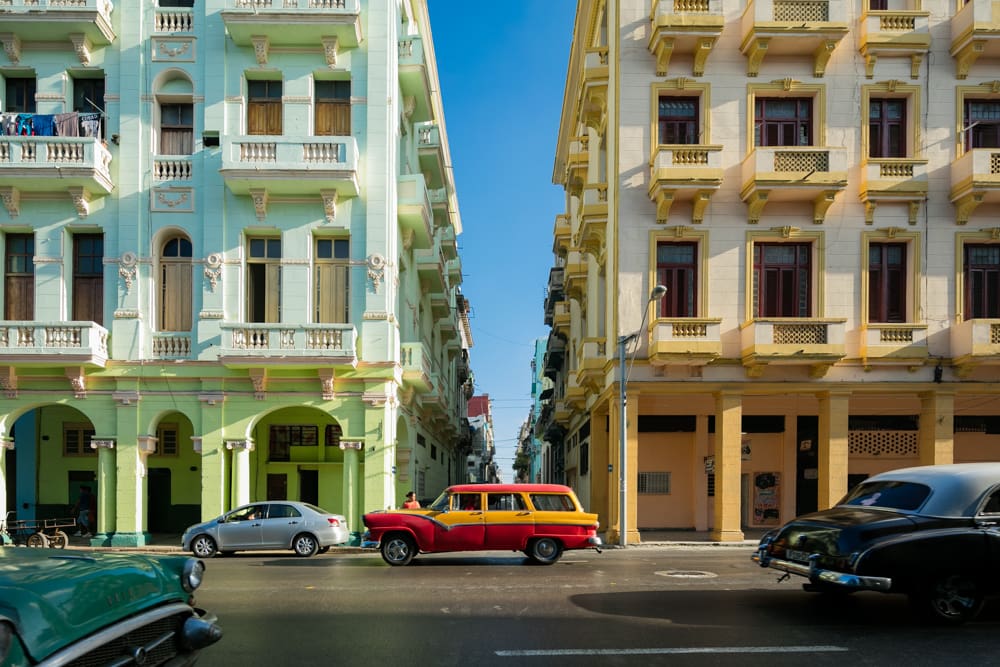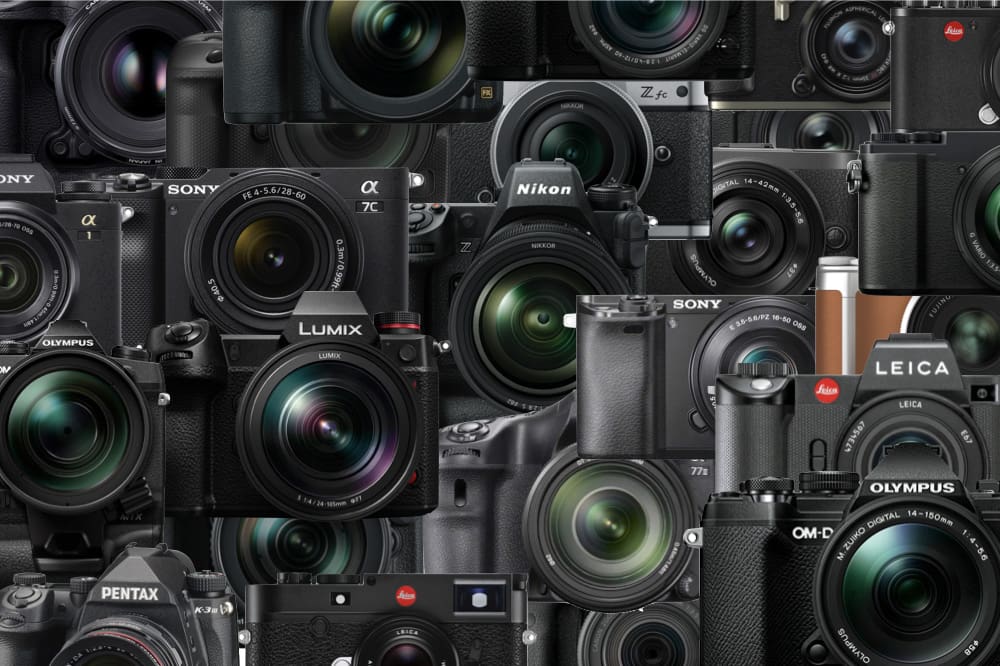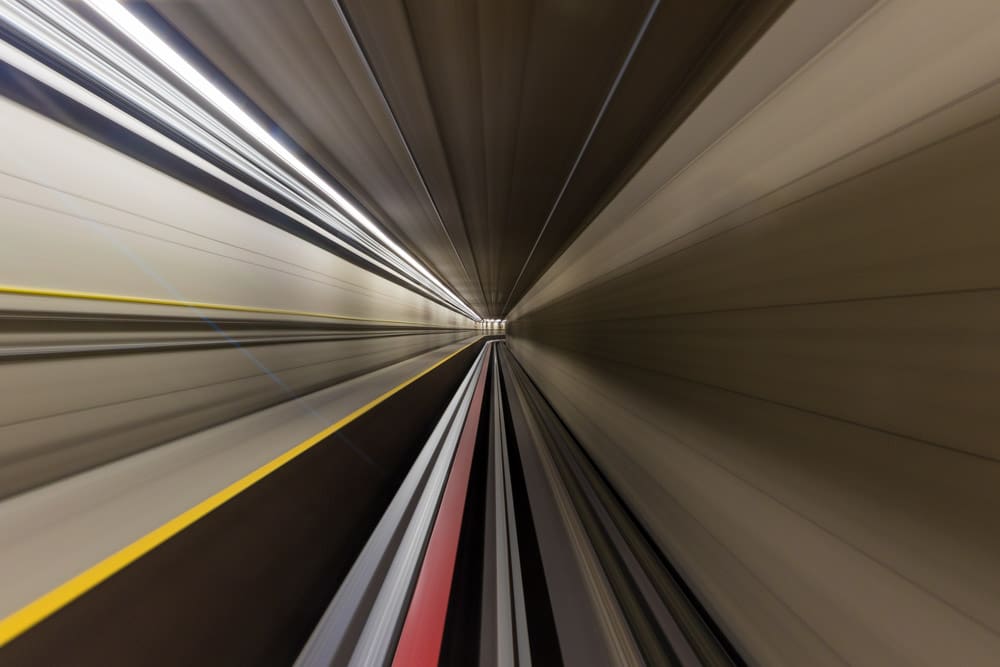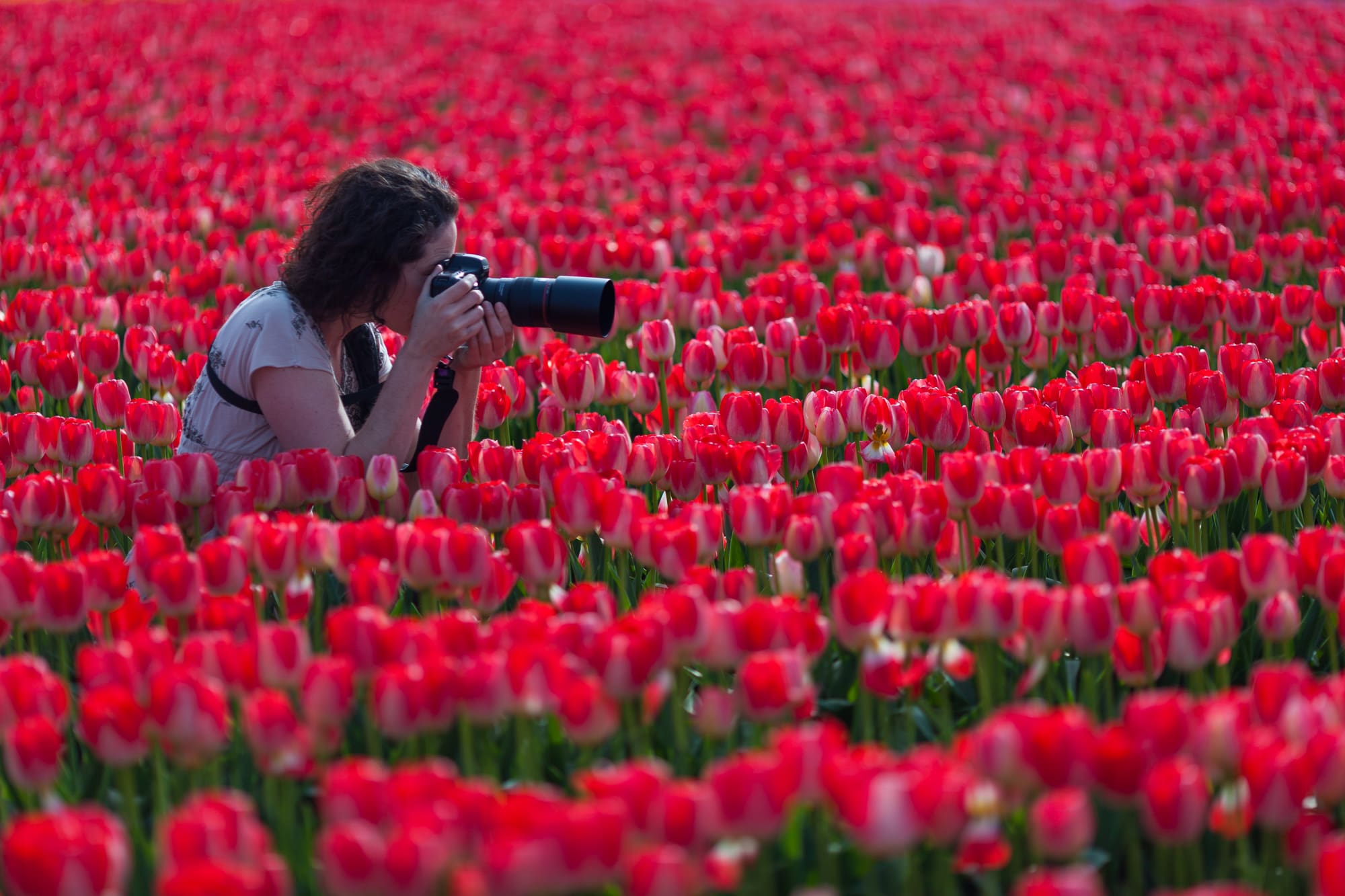Ask any long-time photographer about bags and they’ll likely tell you that they have a closet full of them. I fit that model to a T, with one addition, my closet is a walk-in. It’s a common complaint from photographers that there is no perfect camera bag. I always counter that argument with the fact that there are many perfect camera bags; it’s just that they’re only good at one thing.
The reason for this common trope is that each bag is designed for a range of applications and a certain amount of gear. Add or subtract a lens, change your way of shooting and that bag is no longer the right piece of gear. In addition, bags don’t hold much resale value like cameras or lenses. What do you do with a seldom used bag — put it aside because you might just need it again sometime in the future.
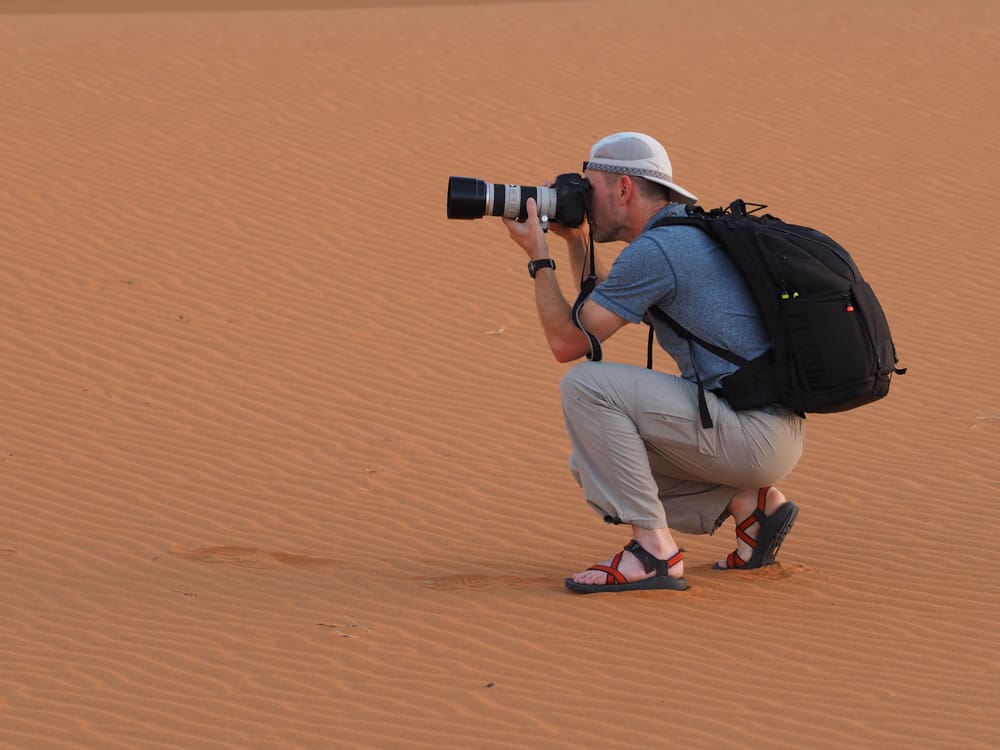
I’ve had a lot of bags over the years, some good, a few great, and a couple of terrible ones. All the good ones I still have, except for the ones that I’ve worn out; those were replaced with similar or updated models, if they were available.
Back in the day when I was working in the camera shop, selling a bag was sometimes a peculiar experience. A first-time camera buyer might spend 15 minutes talking over cameras and lenses, but then spend 30 minutes trying to find the mythical perfect camera bag. For the more experienced photographer, you didn’t try to “sell” them on a particular bag – that just didn’t work. You could show them the options, but choosing a particular bag was a very personal choice.
I believe the camera bag is a very important choice. I’ve long said that if you want the perfect camera system here’s what you do: find the perfect bag for you and your purpose, then figure out what gear can fit into it.
Changing Gear
The inevitable problem is that a photographer’s life is filled with both growth and change. Technology improves and that means that the choice of cameras and lenses are in a constant state of evolution. It’s uncommon to find a photographer that hasn’t made a single equipment addition or subtraction over the last 5 years. While not every upgrade in gear requires a bag change, many do.
My old Domke F2 camera bag was perfect for my needs back in the late 80’s. It fit my Nikon F4s and F3 along with a padded lens insert for four lenses. That insert is useless today because most all the lenses have grown in girth. Most of my old lenses had filter sizes between 52mm and 67mm. Today, pretty much all my lenses range from 77mm to 82mm. The old bag is still useful, but now for different stuff like lighting or audio.
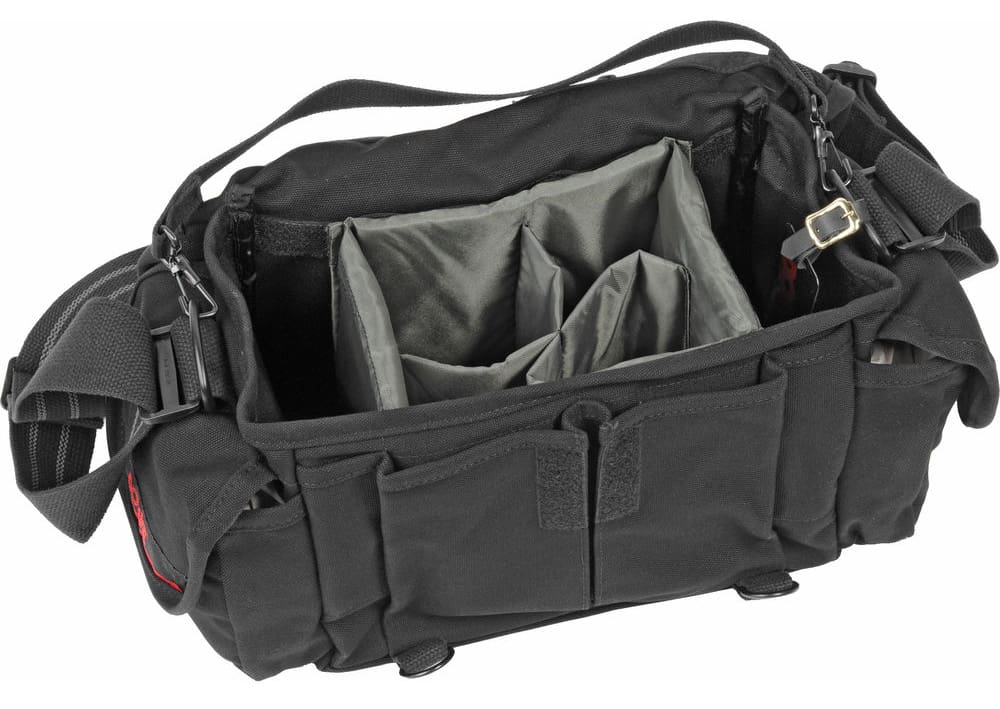
Domke F2
What you shoot and how you shoot also impacts the style of bag that works best. The biggest change in bags since I got started in photography is the proliferation of camera backpacks. In the late 80’s if you needed to carry a lot of gear, a few manufacturers (Tamrac, LowePro) made enormous shoulder bags that were big enough to carry a large watermelon. Frequently used by commercial or wedding photographers, those bags have been replaced by rolling bags, hard cases and backpacks. I’m sure that those old shoulder bags kept a number of chiropractors busy!
Gear Upsizing
The rise of the backpack is due to a couple of reasons; the first is the increase in gear size. The afore mentioned lens increase is due to a combination of additional lens technologies in present day lenses like: image stabilization, focus motors, and faster maximum apertures. Take a close look at the new Canon 28-70mm f/2 behemoth, sporting a 95mm filter size; there was nothing like that back in the day.
An additional factor for the upsizing of lenses is quality. About 10 years ago, shortly after everyone started reviewing lenses on YouTube, manufacturers started putting out higher quality lenses to match the increasing resolution of cameras. The two best ways to make higher quality lenses are with money and/or size: check out the 50mm Leica Summicron or the 55mm Zeiss Otis to see which route they took. Most manufacturers decided to increase quality by making larger lenses: take a look at the old F-mount vs the newer Z-mount Nikon 50mm f/1.8 lens; the new version is 65% longer and 2.2x the weight.
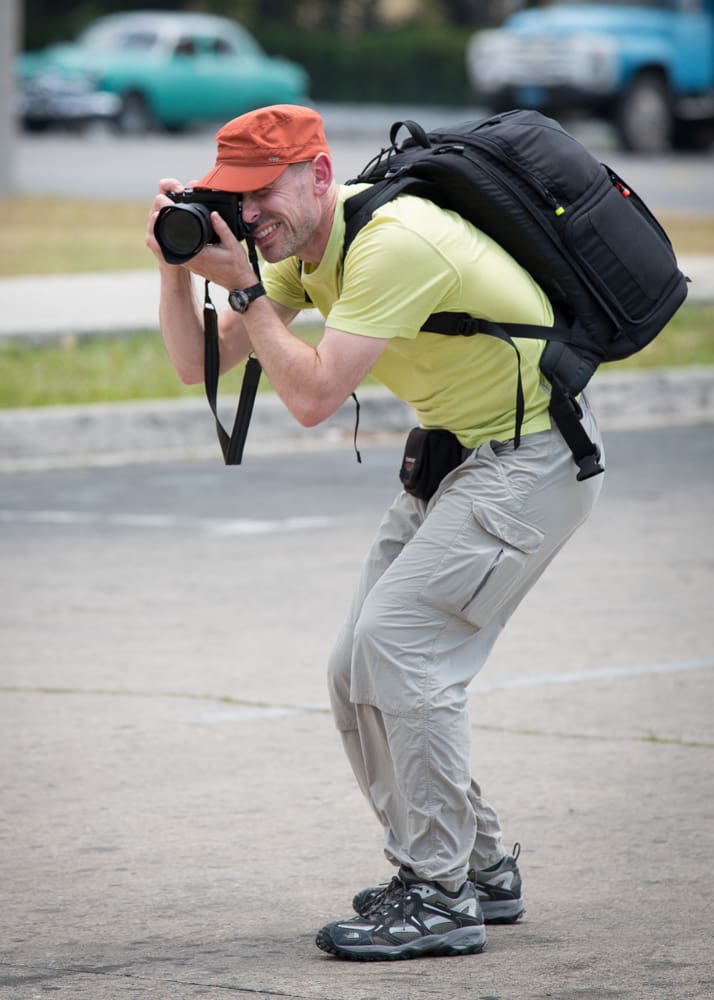
A second reason for the rise of backpacks is that many enthusiasts carry more gear. G.A.S. or Gear Aquisition Syndrome is real, and a lot of people have a lot of gear. I’m not laying blame or accusing anyone of anything, I’m at fault 10 times over for this sin. It’s just a fact. Those who are into photography, are just more into it nowadays. Twenty five years ago it was extremely rare to hear that someone shot with two different camera brands. Today many photographers shoot with more than one system.
As many of you know I travel and lead photographic tours. I get to see and chat with a lot of people about their gear choices. I frequently get a lot of questions from people trying to find the right solution for the best bag. They tell me what they like about their current system, but also what frustrations they have. We talk about the compromises and how to minimize them.
The right bag combines the needs you have for the gear you want to take and the style in which you are traveling and shooting. Every bag style; shoulder, backpack, hard-case, roller, sling, has its purpose, along with a collection of pros and cons.
The Bag Breakdown
I won’t try to solve every scenario here, but let me try to breakdown some of the most common needs for a bag and how I’d address it. Most of these fit into the category of heading out for a day of exploring and shooting.
Choosing the best bag, or whether to bring one at all, is a very personal choice but also can make a big impact on how and what you photograph. Generally speaking there are three basic ways you can go, let’s classify them as: large, medium, and small.
Disclosure
I am not sponsored by any manufacturer in any way, nor promoting any item listed below. I’m simple stating what I have so that you have a more specific point of reference as to what I’m talking about. I’m not endorsing these products and I am not recommending them specifically for you. If I like something or don’t, I’ll mention it.
The Large Option
If you have a large amount of gear to transport from one location to another, on foot, the best solution is the backpack. The shape and form of the human body allows for a large amount of weight and bulk to be comfortably carried on one’s back. Assuming a good design and a properly fitted strap system, you should be able to easily carry 1/4 of your weight in a backpack. For anyone needing to personally carry large, heavy or numerous pieces of photographic gear the backpack is usually the best choice.
Besides weight and volume the other big benefit of a backpack is the comfort of walking with it. The balance and weight distribution make carrying even a modest amount of weight far more comfortable than a shoulder bag. The rolling bag can be a good option in this category if you are confident that you’ll have hard smooth surfaces to roll it on. For transporting gear from point A to B, on foot, the backpack is likely the most comfortable and efficient way to go.
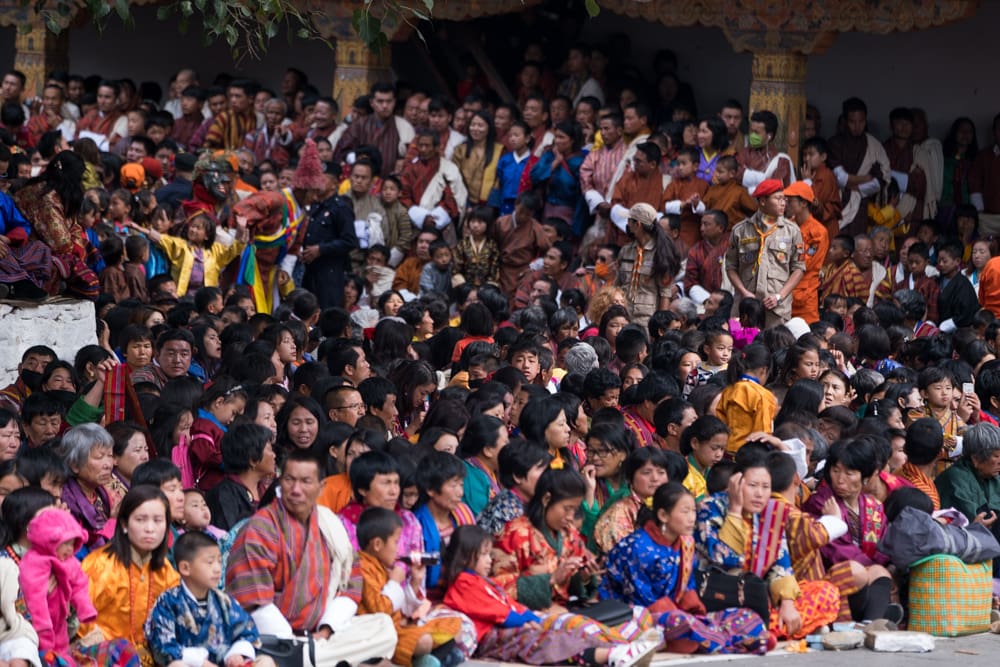
The crowded viewing area at the Tshechu dance festival, Bhutan
The big downside to the backpack is of course, access. Getting to your gear requires unstrapping and taking the pack off and laying it on the ground. For the quick shot, well, there is no quick shots when you working from a backpack. Some companies have tried to shorten the camera access issue with limited success.
If you want to shoot quickly from a backpack you’ll need to carry your camera outside the pack. There are mounts where you can attach it to the backpack itself, or you can use a shoulder strap. I’ve used this system many times for strolling the streets of Havana. I’d pick a lens and shoot with it until a situation warranted making the time consuming switch. It’s a pretty good combo of being ready for the moment and having all that you might need.
This reduced access of having all your gear on your back does have a bit of a silver lining. Getting to your gear and taking a photo is buffered by a brief moment of contemplation. Thinking before you shoot – now that’s something to ponder. When separated from accessing your gear you tend to think a little bit harder about whether the potential shot is really worth the time and effort to get it. I know from personal experience that I’ve let a number of potential shots go because they just weren’t worth the effort. I don’t see this as a negative; when out in the field, time management is an important issue. If you spend too much time chasing down mediocre images, you’ll have less time to invest in the best opportunities.
Two important additional factors to consider when looking at backpacks is whether you plan to also carry a tripod or other non-photographic gear with the pack. The smaller the pack, the more difficult it will be to bring a tripod or extra gear. Access to the various items along with the manner of storage will be important. Be very careful about storing water bottles near expensive electronics!
I own an embarrassing number of photo-backpacks – six by last count, with each one fitting a slightly different need. My favorite is a relatively small one that fits a fair amount of gear, but isn’t so big that it causes problems in crowds, on very long walks, or raise needless suspicion from security guards. The Lowepro Flipside 400 AW II stores the following gear for me: camera body, normal zoom lens, wide zoom lens, telephoto zoom lens, bonus lens, filter pack and all the little accessories that I might need.
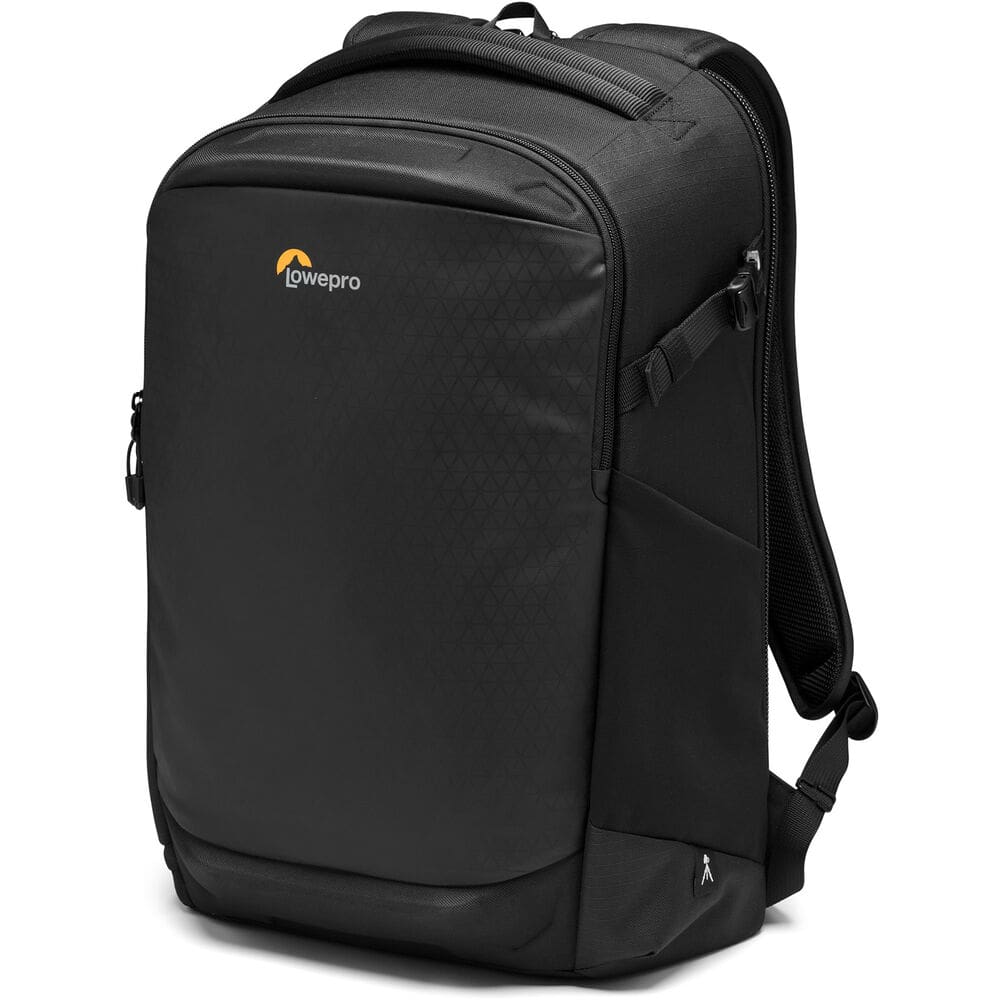
Above & Below: Lowe Pro Flipside 400 AW II
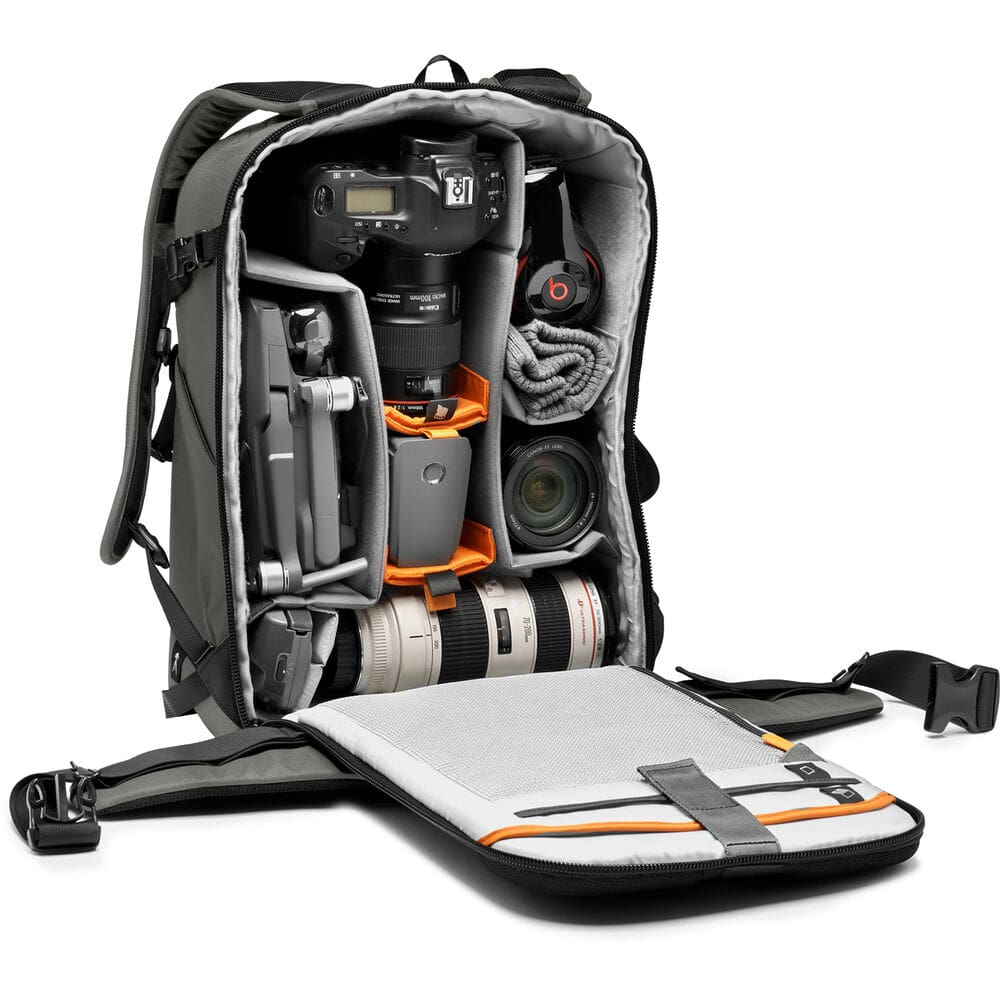
This smaller sized backpack does have a tripod carrying system but anything too heavy on it throws off the balance. It’s also not great for bringing along lunch, or extra clothing. I can give up some lens space for more clothes if necessary, but I rarely take that option.
The Happy Medium?
The medium option is the shoulder bag that allows for a small collection of gear that is easy and quick to access. Back in my photojournalism days the Domke F2 shoulder bag was the prerequisite choice for most every newspaper photographer. Big enough for two bodies and four lenses, it was the perfect balance between preparedness and mobility. The modern versions of this bag have had to evolve to accommodate the increasing size of gear.
While I still have my original Domke F2 bag, I now prefer a slightly smaller bag that’s good for 1 body and 3 or 4 lenses. The Think Tank Photo Retrospective 7 is a well-made accessible new version of my old Domke.
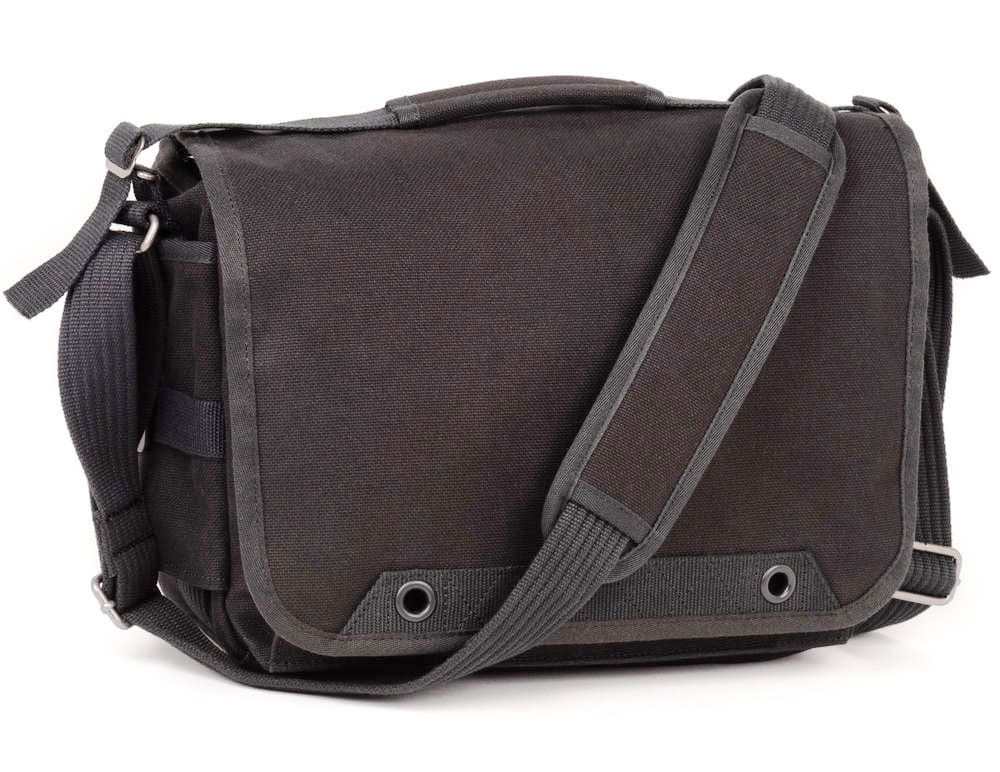
Think Tank Photo Retrospective 7
The shoulder bag is ideal if you have a small amount of gear that you want to have quick access to. For strolling the streets of a foreign destination where curiosities are around every corner, these make for a practical option. They are also good when you want to tuck everything away and not advertise that you are a photographer. The simple black bag without a logo is great for remaining incognito.
In my past international travels I’ve mostly used backpacks for the airline flight and all photographic journeys while on location. Bringing along another bulky camera bag proved too difficult to do in many cases, until I came upon a little trick.
If I do want to bring along a second or bonus camera bag I’ll stuff it with clothes, toiletries or other items that would normally be packed in my luggage. I’ll then pack the shoulder bag, and all it’s contents into my check luggage. When on location I’ll unpack the contents and have it as a lightweight option to my backpack.
The Minimalist
The lightest and most carefree option is to leave the bag at home and just head out with a single camera and lens, usually supported by a hand strap or shoulder strap. When weight, size, and mobility are of a primary concern or where you want to present yourself with a less encumbered presence, the solitary camera is the way to go. If you are used to carrying around a small arsenal of gear it can be hard to narrow down the lens options to one choice. Choosing what lens is best is where many photographers have lost countless hours trying to ponder the optimal choice.
The bravest of our brethren will opt for a prime lens. Narrowing down the vehicle of your storytelling to a single choice is a bold one, but also one that will help you grow as a photographer. Working with a single lens forces you to look at the world in a certain way. You quickly dismiss that which is out of your grasp and you focus on what is in your range. It’s a liberating and educational experience, one that I recommend to all photographers.
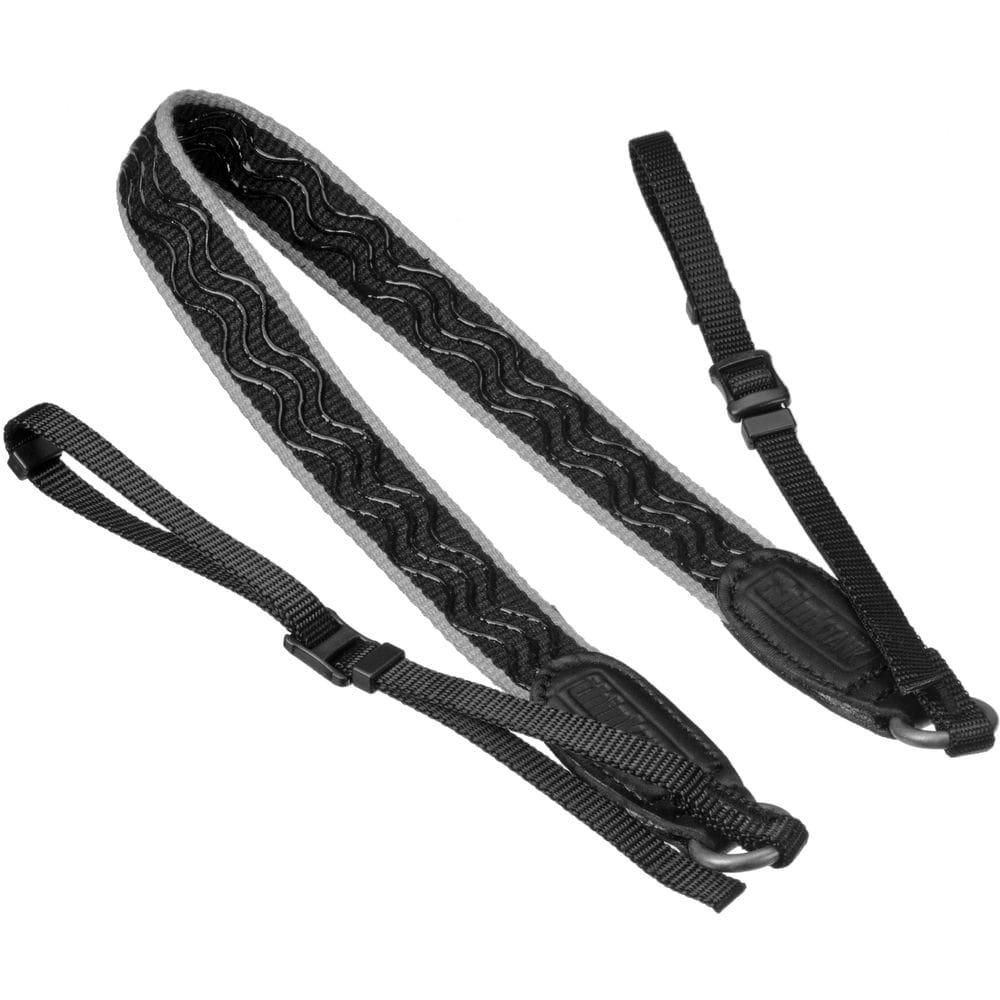
Think Tank Photo Camera Strap
For the majority of us, the practical 24-70mm, 24-105mm, or 24-120mm will cover a wide range of shots while providing a reasonable maximum aperture and will not be too big to make a spectacle of yourself. I prefer to keep my camera straps simple and black. I’ve never used the supplied strap that came with the camera. As I say, I’m not sponsored and I certainly don’t feel like providing free promotion. I also don’t like the attention that it provides for a potential thief. I’ll take the minimalist Think Tank Photo Camera Strap or the Black Rapid Camera Sling which can quickly screw into the tripod socket of my normally unstrapped camera.
Bhutan Dance Festival
On my last photography tour in Bhutan, a highlight event, one that we set aside two days of shooting for, was the Tshechu dance festival. This dance event would feature colorful performers in a spectacular monastery with numerous options for creativity. All of our tour participants and the tour leaders entered day one with backpacks filled with everything we could possible need.
The venue was small and the crowd was large. The tightly packed open seating meant a lot of squeezing, shuffling and “excuse me’s.” By the end of the day everyone was exhausted and a big complaint was trying to work with the large crowd.
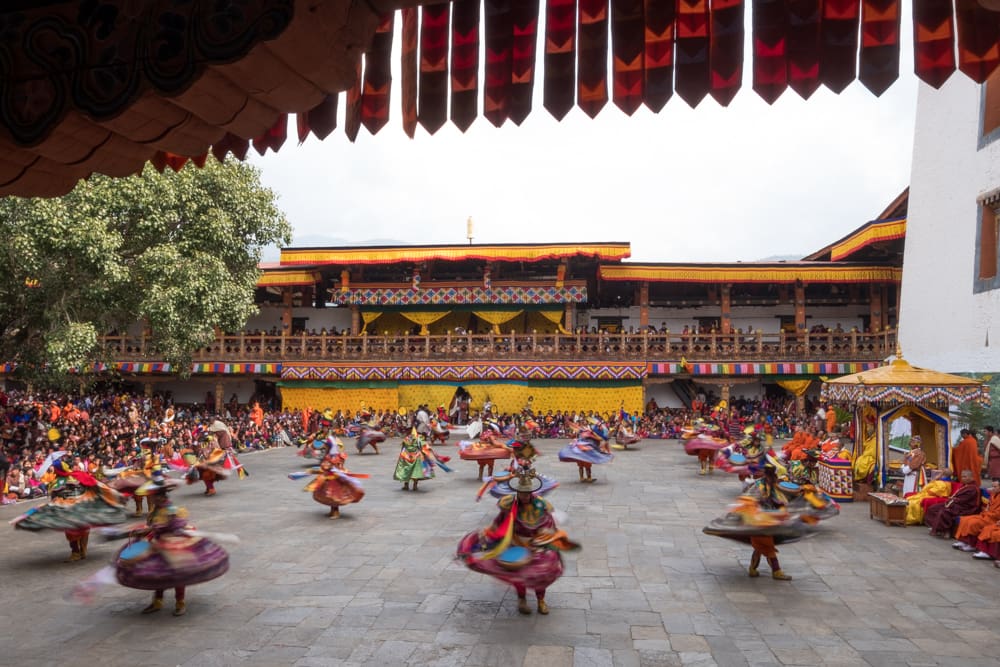
My view of the Tshechu dance festival performers
On day two of the festival, everyone in our photo group came down to breakfast sans backpack. Everyone was sporting a solitary camera and a single lens, except for me. I was the only one that had decided to shoot a crop-frame system on this trip and my gear was a bit lighter and smaller than the others, so I had two cameras and two lenses hanging from camera straps.
We all ditched our bags because they were more trouble than they were worth. Just because it was allowed and possible to take the backpack in, it wasn’t the wisest of choices. The second day proved to be a very different experience than the first. Speaking only for myself, beyond easing the burden on my back, I felt like I fit in with the crowd much better.
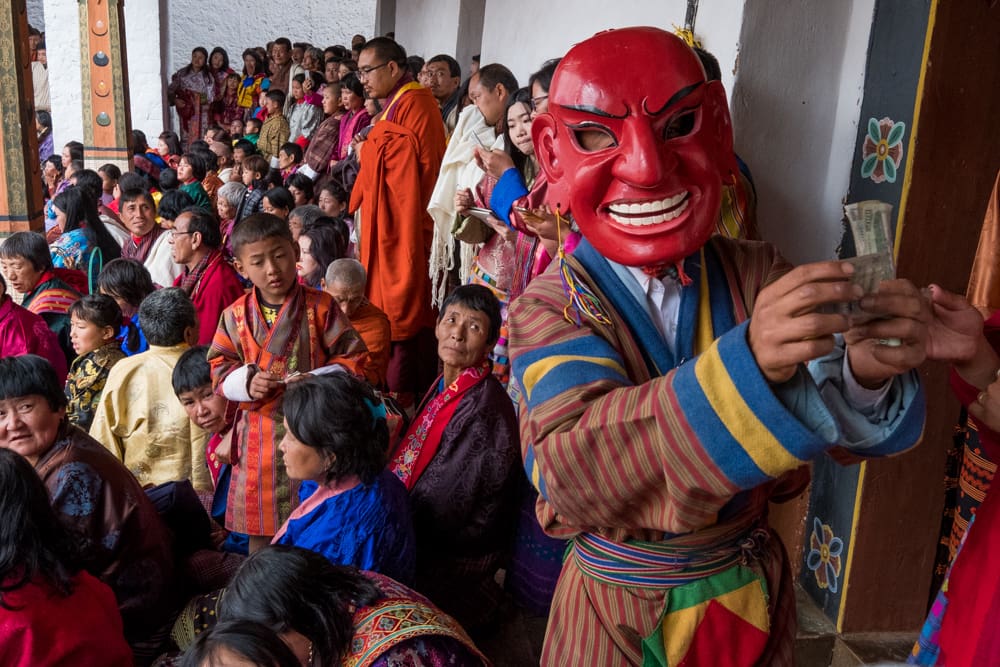
My spot in the crowded viewing area of the Tshechu dance festival
Making a Choice
When determining which carrying solution is right for you, consider the following questions:
- What are my primary photographic goals?
- What are my secondary goals?
- What gear do I really need?
- How long to get from point A to point B?
- How frequently are there unknown subjects between point A and B?
- How might having too much gear negatively impact my experience?
The answers to these question should guide you to a choice that helps you achieve your main goal while giving you other opportunities along the way. Every choice comes with compromises so perfection will be elusive. Try to find a happy middle ground that achieves what’s most important to you.
If you have the opportunity to try all three options listed above, give it a go. Working in the same environment with a different gear setup will force you into looking at the world in a different way.The right bag is all a matter of perspective. Choose with the best information that you can get and then make the best of it in the field.
Become part of John’s inner circle
Sign up for the newsletter here – it’s free.
Want to become a better photographer?
Check out John’s selection of photography and camera classes here.
